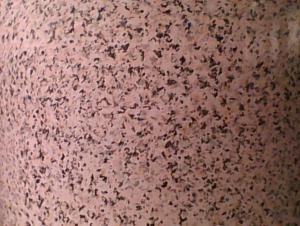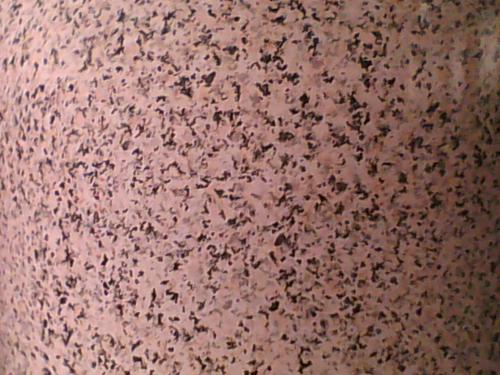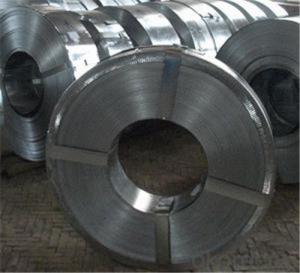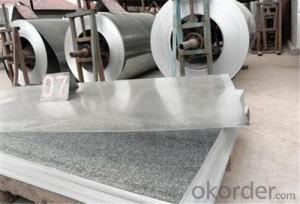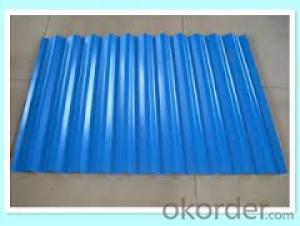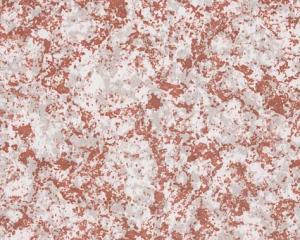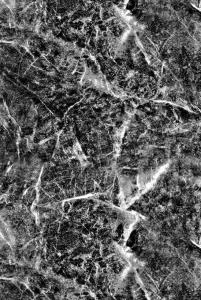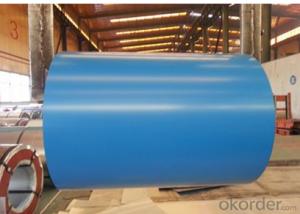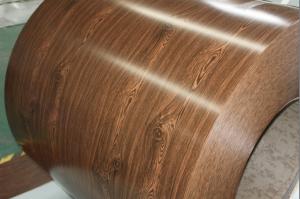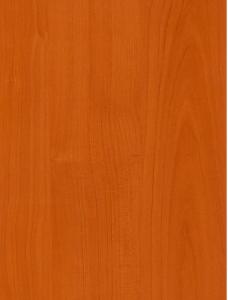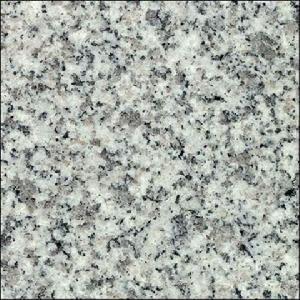Pre-painted Galvanized Steel Coil-EN10169-STONE10
- Loading Port:
- Shanghai
- Payment Terms:
- TT OR LC
- Min Order Qty:
- -
- Supply Capability:
- 2000吨 m.t./month
OKorder Service Pledge
OKorder Financial Service
You Might Also Like
Pre-painted Galvanized Steel Coils/ PPGI/GI
I Specifications:
1.Thickness:0.16-2.0mm
2.Width:600-1500mm
3.Material: SGCC,SGCD,SECC,SECD,DX51D+Z
4.Zinc coating:40-275G/M2
5.Surface Structure: galvanized ,zero spangle, regular spangle or normal spangle
6.Surface treatment: chromated and oiled, chromated and non-oiled
7.Color:all RAL series
II Main characteristics :
1.strong corrosion resistance
2.surface quality
3.conducive to deep processing,such as the embossed PPGI,printed PPGI&punching PPGI
4.economy and practicality
III Applications:
Household Appliance:
1.Refrigerator shutter &side panels, Washer, Freezers, Air conditions,
2.Rice Cooker, Microwave Ovens, Water Heaters, Sterilization Cabinets, Range Hoods
3.Computer Panels , DVD/DVB panels, TV back panel etc.
Teaching Board: whiteboard, blackboard, green board(chalk board).
Indoor Decoration: Fireproof Door, kitchen cabinet, wall decoration.
Shipping Industries: Ship, Fecht, Marine.
Elevator/Medical Equipment/Rubbish Bin.
Thickness:0.17mm-0.8mm
Width:600mm-1250mm
Prepainted Galvanized Steel Coil
- Q: did bible stated that steel is coming from outer space. i mean meteor rocks that enter our earth sistem contains the minerals iron.
- steel is manufactured from iron ore and coal in furnaces and it is not found in raw state in nature
- Q: How do steel coils contribute to the HVAC ductwork industry?
- Steel coils play a crucial role in the HVAC ductwork industry by providing the necessary material for the fabrication of ducts. These coils, typically made from galvanized steel, offer several key contributions to the industry. Firstly, steel coils are highly durable and long-lasting, making them ideal for constructing HVAC ductwork. They can withstand high temperatures, pressure, and exposure to various environmental elements. This durability ensures that the ducts made from steel coils can efficiently transport air for extended periods without deteriorating or losing their structural integrity. Moreover, steel coils are flexible and malleable, allowing for easy manipulation during the fabrication process. HVAC ductwork often requires customization to fit specific building layouts and designs. Steel coils can be easily cut, bent, and shaped without compromising their strength. This flexibility enables the production of ducts in various sizes, shapes, and configurations to meet the specific requirements of different HVAC systems. Additionally, steel coils provide excellent resistance to corrosion and fire. The galvanized coating on the steel surface acts as a protective layer, preventing rust and corrosion caused by moisture or chemical reactions. This corrosion resistance ensures that the ductwork remains functional and safe for an extended period. Furthermore, steel coils contribute to the HVAC ductwork industry by enhancing energy efficiency. The smooth surface of steel coils reduces air friction and turbulence within the ducts, allowing for smoother airflow and reducing energy loss. This improved energy efficiency translates into cost savings for building owners and occupants, as it reduces the energy consumption required to maintain a comfortable indoor environment. Lastly, steel coils are readily available and cost-effective, making them a popular choice for HVAC ductwork fabrication. The abundance of steel coils in the market ensures a steady supply, allowing for efficient production and installation of ductwork systems. Furthermore, their cost-effectiveness makes them an economical option for both small and large-scale HVAC projects. In conclusion, steel coils contribute significantly to the HVAC ductwork industry by providing a durable, flexible, corrosion-resistant, energy-efficient, and cost-effective material for the fabrication of ducts. Their unique properties ensure the construction of high-quality ductwork systems that effectively and efficiently distribute air in buildings for optimal comfort and functionality.
- Q: My daughter wants a pair of steel toe cap boots for around the horses but wants them warm, so ideally fur lined etc. Does anybody know where I could purchase them as everywhere I look its only one or the other, cant get steel with fur lining. Very frustrating. I live in the uk. Many thanks.
- The steel toe cap wishes to be equipped for the duration of manufacture for the boots to arrive the desired standards. It could be nice if you looked at one of the PPE sites and see if you will see a pair that you may dye or paint.
- Q: What are the different types of steel coil surface appearances?
- The different types of steel coil surface appearances include mill finish, pickled and oiled, galvanized, painted, and textured.
- Q: How are steel coils used in the production of agricultural irrigation systems?
- Steel coils are used in the production of agricultural irrigation systems to create the pipes and tubing that transport water to crops. These coils are formed into various designs to meet specific irrigation needs, ensuring efficient and reliable water distribution for optimal crop growth.
- Q: What is the average width tolerance for steel coils?
- The average width tolerance for steel coils can vary depending on the specific industry and application. However, in general, the standard width tolerance for steel coils is typically around ±0.005 to ±0.020 inches.
- Q: I was wondering because i just watched an episode of build it bigger on the discovery channel about the uss George bush, and when they were discribing it they said it was 500 tons of steel and 47,000 tons of aluminum. this kinda struck me as odd because i thought that it was mostly made of steel. and i would think that even if it was mostly aluminum, that the hull would be steel. and i think the hull would weigh more than 500 tons.
- The hull is steel the island is an aluminum composite. Carriers are 100,000 tons of Diplomatic Diplomacy!
- Q: What are the commonly used molds steel?
- floor scientific care of different types, I communicate approximately features of chilly paintings die metallic warmth scientific care: chilly paintings mold metallic alloying aspects quantity and style are plenty, alloying is quite complicated. The detrimental thermal conductivity of metallic, the austenitizing temperature is bigger, so the heating technique slowly, preheats or cascade warmth greater. to guard the floor of the metallic high quality, heating medium must be heavily, so the controlled ecosystem furnace, vacuum furnace, heating equipment and greater procedures, including person-friendly use, salt bath heating must be totally digitizing and purification. on the thought of accomplishing quenching, ought to apply a average cooling way. Isothermal quenching, interrupted quenching, intense rigidity gas quenching, including air cooling quenching is someone-friendly technique. with a view to greater strengthen, chilly scientific care, or nitriding floor scientific care has an considerable result and use. Salt bath scientific care must be well timed cleansing, technique protection paintings very heavily. chilly paintings die metallic is costly, chilly paintings mold areas processing complicated, long cycle and intense cost of manufacture. So the formula and operation technologies must be very careful, to circumvent high quality coincidence, confirm the protection of the production technique.
- Q: How do you prevent damage to steel coils during transportation?
- To prevent damage to steel coils during transportation, several measures can be taken: 1. Proper packing and securing: Steel coils should be packed tightly and securely in order to prevent any movement or shifting during transportation. This can be achieved by using appropriate packaging materials such as steel cradles, wooden dunnage, or steel straps to hold the coils in place. 2. Cushioning and padding: Adding cushioning materials such as foam padding, cardboard, or bubble wrap between coils can help absorb shocks and vibrations during transit. This extra layer of protection minimizes the risk of scratches, dents, or other damages caused by contact with other objects or surfaces. 3. Adequate handling and loading: Using proper lifting equipment and techniques is crucial to avoid mishandling and dropping of the steel coils. Forklifts or cranes should be used to lift and load the coils carefully onto transportation vehicles. Additionally, coils should be stacked in a way that distributes weight evenly to maintain stability. 4. Weather protection: Steel coils are susceptible to corrosion, so it is essential to protect them from moisture and adverse weather conditions during transportation. Coils should be covered with waterproof and weather-resistant tarps or shrink wrap to prevent water or moisture from reaching the steel surfaces. 5. Regular inspections: Regularly inspecting the coils before, during, and after transportation is vital to identify any potential damage or issues. This allows for timely intervention to rectify any problems and prevent further damage. 6. Properly trained personnel: Ensuring that personnel involved in handling, loading, and transporting the steel coils are adequately trained is crucial. They should be aware of the proper procedures and techniques to safely handle and transport the coils, minimizing the risk of damage. By implementing these preventative measures, the risk of damage to steel coils during transportation can be significantly reduced, ensuring that the coils reach their destination in optimal condition.
- Q: How are steel coils used in the production of solar panels?
- Steel coils are not directly used in the production of solar panels. However, steel is typically used in the manufacturing of the structural frames and mounting systems for solar panels. These frames and mounting systems provide support and stability to the solar panels, ensuring their proper installation and long-term durability.
Send your message to us
Pre-painted Galvanized Steel Coil-EN10169-STONE10
- Loading Port:
- Shanghai
- Payment Terms:
- TT OR LC
- Min Order Qty:
- -
- Supply Capability:
- 2000吨 m.t./month
OKorder Service Pledge
OKorder Financial Service
Similar products
Hot products
Hot Searches
Related keywords
